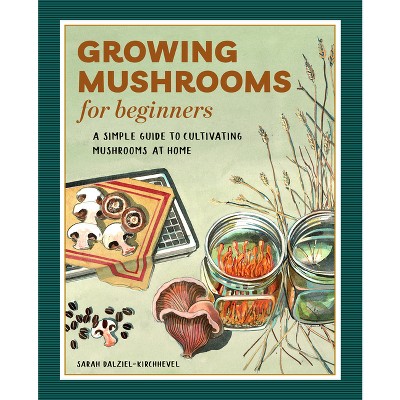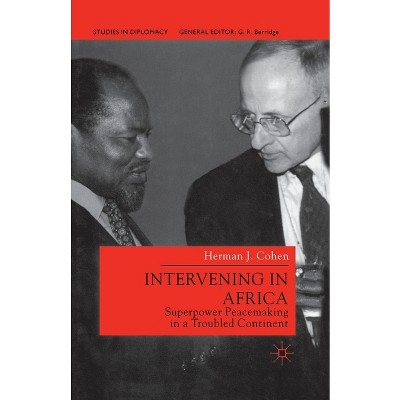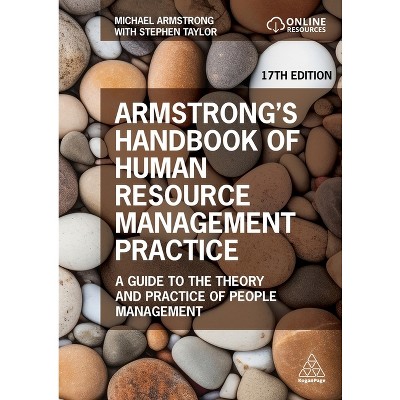Sponsored

How the Earth Turned Green - by Joseph E Armstrong (Paperback)
$48.00
In Stock
Eligible for registries and wish lists
Sponsored
About this item
Highlights
- On this blue planet, long before pterodactyls took to the skies and tyrannosaurs prowled the continents, tiny green organisms populated the ancient oceans.
- About the Author: Joseph E. Armstrong is an award-winning teacher, professor of botany, head curator of the Vasey Herbarium, and director of the Organismal Biology and Public Outreach Sequence for Biological Sciences Majors, all at Illinois State University.
- 576 Pages
- Science, Life Sciences
Description
About the Book
Long before more infamous creatures such as T. Rex walked the earth, green organisms were the dominant life forms. Evidence suggests that chlorophyll, responsible for coloring these organisms, has been in existence for some 85% of the Earth s long history. Ancient predecessors of today s plants and the communities they formed are quite different from much of life today, but at the same time some incredible similarities have been retained. "How the Earth Turned Green" traces the history of this taxon--those that are colored by chlorophyll and what many would call plants--from their ancient beginnings to the diversity of green organisms that inhabit the earth today. Using an evolutionary framework, the manuscript addresses questions such as should all green organisms be considered plants? Why do these organisms look the way they do? How are they related to one another and other living organisms? How do they reproduce? How have they changed and diversified over time? And how has the presence of green organisms changed the Earth and its environment?"Book Synopsis
On this blue planet, long before pterodactyls took to the skies and tyrannosaurs prowled the continents, tiny green organisms populated the ancient oceans. Fossil and phylogenetic evidence suggests that chlorophyll, the green pigment responsible for coloring these organisms, has been in existence for some 85% of Earth's long history-that is, for roughly 3.5 billion years. In How the Earth Turned Green, Joseph E. Armstrong traces the history of these verdant organisms, which many would call plants, from their ancient beginnings to the diversity of green life that inhabits the Earth today. Using an evolutionary framework, How the Earth Turned Green addresses questions such as: Should all green organisms be considered plants? Why do these organisms look the way they do? How are they related to one another and to other chlorophyll-free organisms? How do they reproduce? How have they changed and diversified over time? And how has the presence of green organisms changed the Earth's ecosystems? More engaging than a traditional textbook and displaying an astonishing breadth, How the Earth Turned Green will both delight and enlighten embryonic botanists and any student interested in the evolutionary history of plants.Review Quotes
"Practicing or apprenticing botanists, plant biologists, agronomists, and horticulturists need a detailed understanding of the evolution of plants for a correct perspective on the organisms they study and use, but the current general textbooks provide an inadequate watered-down history. In How the Earth Turned Green, through the knowledge, skill, and friendly writing of Armstrong and the wisdom of the University of Chicago Press, we finally have a book to fill this gap. Its eleven chapters--the final two about the flowering plants--tell the whole story, backed up by a detailed and illustrated appendix on fossil and living ancestors going back to the green algae and cyanobacteria. An essential book for plant students and professionals."--David Lee, Florida International University "author of "Nature's Palette: The Science of Plant Color""
"An intriguing compilation of developmental stages set in reverse order. This approach is vastly appealing, giving us subtle clues of how the Earth blossomed into such an incredible world that most of us simply take for granted. . . . With dozens of diagrams, illustrations and graphic constructs and charts, Armstrong gives us a glimpse of how it all evolved and how it all works together."-- "San Francisco Book Review"
"A remarkable volume on the evolutionary history of green life on our planet. It is a thoroughly enjoyable and readable book on what might have been a dry and tedious subject: plant evolution and diversity. I highly recommend this book as a text for a class on green plant evolution or plant diversity, as a reference book on green plant structure and evolution, or as general reading for anyone interested in the topic."--Michael A. Vincent, Miami University, Oxford, Ohio "Plant Science Bulletin"
"A salient summary of the important concepts that should guide even a college professor teaching introductory biology. . . . How the Earth Turned Green should be required reading for all pre-service biology teachers and on the bookshelf of all K-16 science instructors. . . . Armstrong presents us with a unique approach to the plant kingdom. His refreshing wit and straightforward commentary lead the reader through an evolutionary explanation of why a predominant color of earth is green. His goal is to foster deeper understanding of key concepts, and he raises, and answers, many obvious questions that are almost never asked. As a doctor of botany, I enthusiastically prescribe this book to treat the widespread symptoms of 'Plant Blindness.'"--Marshall D. Sundberg, Emporia State University "Reports of the National Center for Science Education"
"An impressive work that is clearly a labor of love. . . . Armstrong provides a big-picture overview of life on Earth through green-colored glasses, yielding a work that is accessible, scientifically rigorous, and philosophically piquant. Whether used as recreational reading or as a framework for an advanced undergrad or early graduate study course, How the Earth Turned Green is well worth reading for anyone attracted to the 'green background' through which we move."--Sean T. Hammond, Oregon State University "BioScience"
"Armstrong . . . aims his book squarely at plant-blind readers, who see plants as just a green background to life. . . . [He] deftly entertains his readers with a balanced discussion of plant life on Earth, from cyanobacteria and stromatolites to flowering plants. . . . How the Earth Turned Green will make many a reader aware of the importance of plants to the history of this planet."--J. Valauskas, Curator of Rare Books, Library, Chicago Botanic Garden "Current Books on Gardening and Botany"
"Armstrong has opened a door to the sprawling majesty of plant biology and evolution in a way that informs without drudgery, infuses knowledge with example without pedantry, and lightens the heart with a fine sense of humor. This book should be read by anyone who can sense that the world around us is predominantly green."--Karl J. Niklas, Cornell University "coauthor of "Plant Physics""
"Armstrong has written an amazing and wonderful book. It is so well written that it reads more like an engaging novel--one that readers cannot put down--than like a science book. Yet the style is not reduced or simplified science; instead, the author explains all this factual material with prose that is precise, accurate, and concise. The topics range from cosmology to the flowering plants (angiosperms), but this vertical track is accomplished without deviating from the essential task of describing the evolutionary history of photosynthesizing organisms and their relations to planet Earth. Along the way, readers are treated to a synthesis of fundamental stages in the evolution of life itself. This includes an excellent discussion about the origin of life, an even better explanation of the origins of autotrophy in prokaryotes, and a very good description of the endosymbiotic theory. The text is followed by a 141-page appendix that describes all the major photosynthetic groups (including bacteria). This is an exceedingly useful resource for students, which, to this reviewer's knowledge, does not exist anywhere else in such a compact form. Essential."--P. K. Strother, Boston College "Choice"
"Armstrong is not only trying to tell the story of plant evolution. He also wants to explain how science works as well as the problems we face in establishing the relationships between the major plant groups and in developing a consistent plant taxonomy based on plant evolution. Thus he not only tells the story of plant evolution but also of plant evolutionary science. He does this with a great deal of humor and in an anecdotal way, which also make the book fun to read. . . . I enjoyed reading the book very much; even as a trained plant scientist I could find new ideas and concepts that I was not aware of. Thus, this book will be a treasure trove for non-botanists as well as for most plant scientists interested in plant evolution; in addition, I strongly recommend this book for students of plant biology and professional scientists."--Burkhard Becker, University of Cologne "Trends in Ecology & Evolution"
"From Normal, Illinois, comes a decidedly not-normal book. . . . This volume is a completely new way of presenting the history of plants; it integrates details from cell or molecular biology with the fossil record. . . . Botanists will appreciate the fact that Armstrong identifies issues that need further research, not simply points that need 'clarification, ' but questions with the potential to shift paradigms. As such, this truly remarkable book is a perfect gift for deans thinking about new hires, for newly tenured faculty looking to shift research focus, or for students, both undergraduate and graduate, who think that botany is boring, a discipline dominated, as Enrico Fermi once suggested, by the mere knowing of names."--Michael Christianson, University of California, Berkeley "Quarterly Review of Biology"
"Spoiler alert! This book could seriously change your view of what a textbook can be(!). . . . Whilst How the Earth Turned Green is quite technical in places, that should be viewed neither as a negative nor a surprise. . . . But its very informal style (which was most unexpected in--although refreshingly different for--a scholarly text) makes for a highly readable, educational account."--Nigel Chaffey, Bath Spa University, UK "Annals of Botany Blog: News and Views on Plant Science and Ecology"
About the Author
Joseph E. Armstrong is an award-winning teacher, professor of botany, head curator of the Vasey Herbarium, and director of the Organismal Biology and Public Outreach Sequence for Biological Sciences Majors, all at Illinois State University.Dimensions (Overall): 8.9 Inches (H) x 6.1 Inches (W) x 1.2 Inches (D)
Weight: 1.75 Pounds
Suggested Age: 22 Years and Up
Number of Pages: 576
Genre: Science
Sub-Genre: Life Sciences
Publisher: University of Chicago Press
Theme: Botany
Format: Paperback
Author: Joseph E Armstrong
Language: English
Street Date: July 8, 2015
TCIN: 1006093056
UPC: 9780226069777
Item Number (DPCI): 247-32-1316
Origin: Made in the USA or Imported
If the item details aren’t accurate or complete, we want to know about it.
Shipping details
Estimated ship dimensions: 1.2 inches length x 6.1 inches width x 8.9 inches height
Estimated ship weight: 1.75 pounds
We regret that this item cannot be shipped to PO Boxes.
This item cannot be shipped to the following locations: American Samoa (see also separate entry under AS), Guam (see also separate entry under GU), Northern Mariana Islands, Puerto Rico (see also separate entry under PR), United States Minor Outlying Islands, Virgin Islands, U.S., APO/FPO
Return details
This item can be returned to any Target store or Target.com.
This item must be returned within 90 days of the date it was purchased in store, shipped, delivered by a Shipt shopper, or made ready for pickup.
See the return policy for complete information.
Frequently bought together
Trending Non-Fiction

















